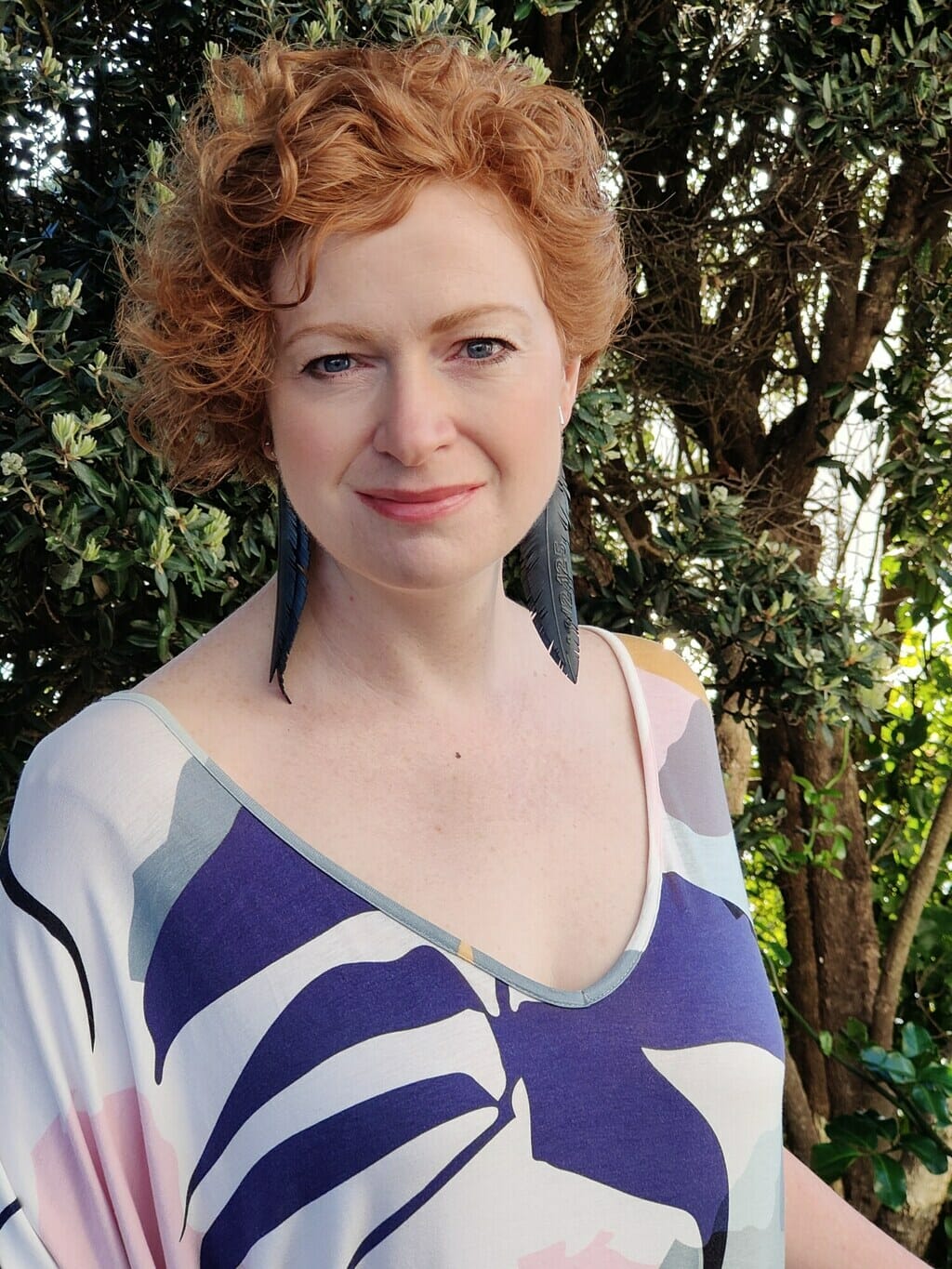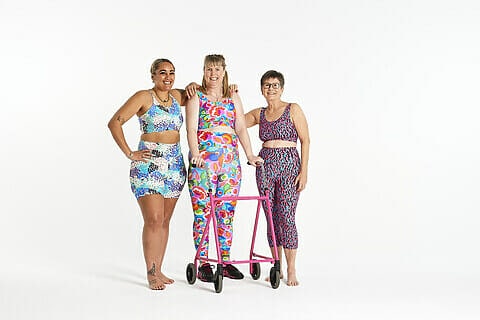Image above from Everyday Health.
You’ve finally got a diagnosis for the debilitating pain that is endometriosis but going under the knife isn’t always the answer. What are your options for a cure? Havn’t read the first parts to this story? Read part 1 & part 2 on WOMAN+.
Dr Wynn Williams says having a diagnostic laparoscopy to diagnose and cure endometriosis isn’t the be all and end all and the medical community needs to move away from it. Radiological procedures like ultrasound scans and MRI pick up 20% of advanced endometriosis cases but New Zealand lacks experienced operators.
“Standard operators will see a uterus, ovaries, and cervix but you need to know what to look for. It’s why we need to develop specialist radiology imaging centres around the country.”
A gentle vaginal examination and careful analysis of a person’s medical history can also lead to a diagnosis, he says.
“It can be a big advantage to patients because you immediately can tell them about endometriosis and validate their symptoms. And you’ll often have patients crying on the end of the bed because they’re confirming immediately without having to do a laparoscopy.”
The European Society of Human Reproduction and Embryology Endometriosis cure guideline was published in February 2022 and it no longer considers laparoscopy to be the ‘gold standard’ to establish a diagnosis, for example.
Since the surgery, Cole has had to start from scratch. “Every doctor says I should go on birth control hormones and every time I tell them taking hormones makes my life feel not worth living. At no point have they thought, ‘maybe I should put that on her file.’ Being repeatedly recommended a treatment that threatens my mental health makes me feel invisible and unsafe in their care.
“It all feels like a big mess in my head because I still don’t have a clear path forward, I still feel pretty lost. It feels like the health system is trying to appear as though it is treating us, rather than actually acknowledging the gaps and treating us with respect and the latest information.”
Her issue is with the system, and not the people working in it, she says. “It just feels like the system is not set up to help them help me.”
The Ministry of Health’s Dr Robyn Carey says the best practice guidance around diagnosis and management was developed and launched in 2020. They help to focus support, improve consistency, and reinforce a standard approach. They were distributed to all DHBs and have since been marketed accordingly.
“The Ministry strongly encourages all relevant healthcare professionals to familiarise themselves with the guidance so they can incorporate them into their care.
“Through our discussions with a number of stakeholders, we know these guidelines are an important addition to help clinicians in the early detection and treatment of endometriosis.”
The Ministry also produced a webinar addressing the disparities in care, the latest evidence, updates in management, and how this impacts general practice, Carey says.
The Compounding issues of Endometriosis
Rimu Bhooi’s life has also been hugely impacted by endometriosis. The 22-year-old was studying a Bachelor of Arts but decided to take the year off to recover and investigate what’s going on with their body.
Five different GPs told them “it’s just a painful period. It’s pretty normal. It’s pretty common. Just take some Panadol or Ibuprofen and you’ll be fine”. After years of severe pain, they were referred to a specialist and had their first laparoscopy surgery within a year in 2020.
Being non-binary, Bhooi’s experienced gender dysphoria as a result of constantly being misgendered by hospital staff around the country.
“It’s been quite upsetting to have to explain to people, ‘this is the way that I want you to address me and these are my pronouns. Don’t call me a female or a woman, I’m not those things. I understand that I have those organs. But that’s not the entirety of who I am.”
The endometriosis was taken out, but since the surgery they’ve been to A&E clinics, emergency departments, and gynaecology appointments more than 20 times. They’re awaiting another laparoscopy. Until then, they use aids such as a walker and shower stool when the pain limits their mobility.
“My life has become significantly smaller. I can’t walk around town for very long. I can’t hold onto a job. I’m home a lot of the time. I maintain relationships online and friends over for dinner but that’s been the extent of my social life.
“I don’t want to understate how debilitating this life-changing condition can be for people. But at the same time I’ve found incredible friends who have similar experiences and my worldview has changed. There’s a great deal of joy in my life.”
Meanwhile, they also have adenomyosis, a condition that’s similar and often occurs together with endometriosis – but unlike endometriosis it’s treatable by way of a hysterectomy. “I have one disease that’s curable and one that isn’t but at least I can cut out one source of pain.”
They won’t be getting a total hysterectomy if their ovaries aren’t too damaged by the endometriosis, which will keep their options open to have children. “But I think it would be really traumatic for my body to go through a pregnancy.”
About a third of patients with endometriosis may experience fertility difficulties, according to Endometriosis NZ.
“I think the chances are a bit too high for me personally for my mental well being. There’s a whole lot of reasons that contribute to me wanting a hysterectomy, but it’s my choice.”
Dr Wynn Williams says hysterectomies are an option for endometriosis sufferers, but it is important to recognise it’s not a cure.
“It’s important for doctors not to be paternalistic. We see a lot of people who have been denied a hysterectomy but they don’t realise these people have spent a lot of time weighing up their options.”
Endometriosis Impacts on work
After having to take several days off a month due to pain Mal Booth nearly lost her job. Despite having a medical certificate, human resources didn’t believe someone could be so frequently sick. The 32-year-old eventually resigned.
“It had a huge impact on me. I was so scared to tell potential employers why I had left my last job and why there were gaps in my CV in interviews. You don’t want to say that you actually have been so sick you haven’t been able to work.”

She had her first surgery in 2016. She’d been told that she had Irritable Bowel Syndrome and an intolerance to alcohol but the exploratory surgery revealed endometriosis had attached to her bowel.
“Every time I’d go to the toilet I would be crying. The pain was so immense, it would bring me to my knees. Imagine period cramps but on steroids.”
After trying to get pregnant for a year Booth was told she would need another surgery to get rid of the endometriosis in 2019. In what felt like a miracle, she fell pregnant. Her son is now two.
The endometriosis went into remission for a year following the birth but it came back. A second surgery in October last year found internal scarring on her bowel and uterus. She’s been on morphine tablets until two months ago, where she’s been trialing a chemical menopause implant.
After three years of being unable to work Booth’s now working full time in an office.
“It got to the point where my partner and I had to prioritise my quality of life. I’ve been pain-free for two months now. I feel great. It’s bittersweet because I’ve opened a whole can of worms. We’ll have to have some tough conversations when the trial comes to an end.”
For context, a 2019 study estimated that endometriosis costs Australian society AUD$9.7 billion annually. Two-thirds of those costs are attributed to a loss in productivity with the remainder, approximately AUD$2.5 billion, attributed to direct healthcare costs.
The Ministry of Business, Innovation, and Employment labour inspectorate national manager Stu Lunsden says an employee is entitled to take 10 days’ sick leave if they have health-related symptoms and are unable to work.
The legislation doesn’t prescribe what “sick” means. An employer can’t force an employee to have a medical examination but if there’s good reason to believe an employee is impaired, they may suspend an employee.
Businesses can develop their own policies and initiatives above those needed to comply with their legal obligations to better support their workforce, he says. Employers cannot discriminate against workers on the grounds of sex, age, and health.
One of those businesses is Hello Period, which employs a ‘Duvet Day’ policy that allows employees to take five additional days of leave a year, as needed.
Founder and marketing director Robyn McLean says unlike sick leave, ‘Duvet Days’ don’t need to be justified. The policy wasn’t limited to menstruation because menopause is a big issue too.
“We are a startup and so our staff work extremely hard and we want to look after them as much as we can. Obviously on the flip side startups have less money and ‘leave’ costs businesses money.
“However, we’d be nothing without our staff so whatever we can do within our means to support them is important for us to do and in return we get staff who are loyal and work hard. It’s a win, win.”
Do staff abuse the policy? “The answer is absolutely not. I know they appreciate it – and we appreciate them.”
Australia – a Endometriosis case example
In 2017, Health Minister Greg Hunt issued a rare apology to Australian women at the launch of the country’s first National Action Plan for endometriosis.
“I cannot speak more powerfully than the beautiful voices that have told their stories today, the chronic pain, the infertility, the crushing mental health challenges, and in some cases the most tragic of outcomes, whether it is through the condition or through the mental health impacts.
“[L]et me say something on behalf of all of those in parliament and all of those who have been responsible for our medical system, I apologise.
“This condition should have been acknowledged at an earlier time in a more powerful way, and it will never be forgotten again,” he said.
On top of objectives to improve public awareness, education, and treatment options, a targeted call for endometriosis research was issued under the Medical Research Fund to the value of $15m.
Last month the Australian Government announced a further $58m fund under the national plan to fund specialist clinics, improve access to funded MRI scans, research scholarships, education programmes, and a digital platform to access evidence-based information.
Much of what’s been employed in Australia could and should be replicated in New Zealand, Dr Wynn Williams says.
Taking into consideration the principles of Treaty of Waitangi, Improving awareness and education; improving clinical management pathways and care; and undertaking New Zealand-based research could completely change the landscape, he says.
A (somewhat) success story
Radio New Zealand’s Susie Ferguson spent much of her twenties in the UK skipping her period while on different forms of the contraceptive pill and taking heavy-duty pain medication.
Although she’s always had a high threshold for pain tolerance, she’s had to miss school, important events, and sometimes work because of painful periods. She’d use instant reusable instant heat packs – the type that you can boil to reset – and stuff them into the front of her underwear when the pain was so bad.
As a war correspondent Ferguson wouldn’t know how long she’d be away for, what situation she was going into or whether she’d ever come back. It meant she’d pack what felt like a backpackfull of pain medication in advance.

She had a typical endometriosis diagnosis journey, she says, but it took far too many years to get there.
“You go to various clinicians who tell you, ‘this is just part of being a woman’ and ‘you need to just get on with it’. Then you start to question yourself; this is normal, are you wasting resources and what are you complaining about? Is it really that bad? Am I imagining this? Do I really need to be taking so much codeine?”
After being on a waiting list for four years in the UK she was formally diagnosed after a laparoscopic surgery. She was frightened to go under the knife out of fear the surgeon wouldn’t find anything. Then like a lightswitch, she came out with a diagnosis and the pain was gone, she says. “It was fabulously liberating”
She stopped taking contraceptive medication to have children. After two miscarriages she fell pregnant with her son at 31 and then her daughter at 35. She had an IUD inserted between her two pregnancies and after.
The endometriosis came back when Ferguson’s daughter was four. The pain was searingly painful to the point where she’d be sweating while presenting Morning Report, she says.
“It was as if I was six centimetres dilated. I can use this terminology as a yardstick because it was at 6cm when I was giving birth to both of my babies and I’d start sweating from the pain. It would be much harder if you were younger and didn’t have access to such a reference.”
After going through various hoops, the doctor gave her four options: do nothing; continue hormone treatment that was no longer working; have another laparoscopy; or have a hysterectomy. None of those options would guarantee it wouldn’t grow back.
“I’ve had an extremely good experience with New Zealand’s public health system. It was like being hit in the face but in a good way. I’d expected to be given the same treatment that wasn’t working or that I was crazy, which was the case in the UK.”
Two months later she had a hysterectomy. “I had no qualms about it. I didn’t want any more children. It was an easy decision because I didn’t have a sense of needing to hang onto [my uterus]. I am not sentimental about my body. It was a part of my body that had given me years of pain so if I had a shot at sorting it out, I was willing to take it.”
Nearly five years later, Ferguson is pain free.
Havn’t read the first parts to this story? Read part 1 & part 2 on WOMAN+.








